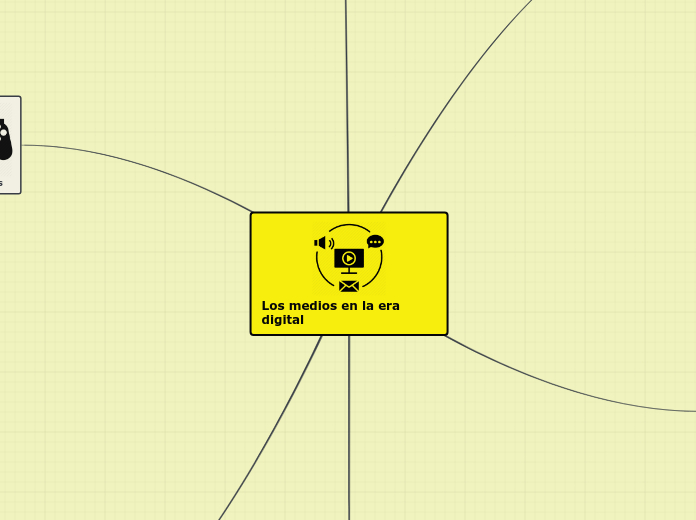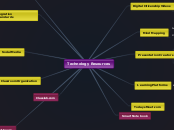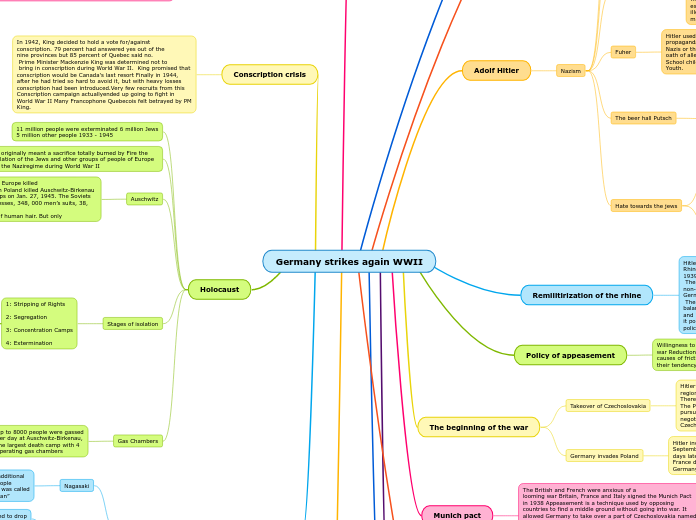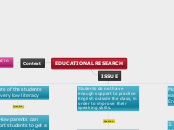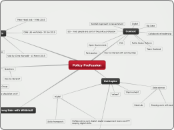Los medios en la era digital
TV digital
Netflix, Amazon Prime, HBO
Reality TV
Social TV
Binge-watching
Binge-watching, also called binge-viewing or marathon-viewing, is the practice of watching television for a long time span, usually a single television show. In a survey conducted by Netflix in February 2014, 73% of people define binge-watching as "watching between 2-3 episodes of the same TV show in one sitting."
Product placement
Product placement, also known as embedded marketing, is a marketing technique where references to specific brands or products are incorporated into another work, such as a film or television program, with specific promotional intent.
Evolución
Videojuegos
Futuro de los videojuegos
Gammification
Gammification is the application of typical elements of game playing (e.g. point scoring, competition with others, rules of play) to other areas of activity, typically as an online marketing technique to encourage engagement with a product or service.
Serious games
A serious game or applied game is a game designed for a primary purpose other than pure entertainment. The "serious" adjective is generally prepended to refer to video games used by industries like defense, education, scientific exploration, health care, emergency management, city planning, engineering, and politics.
Tipos de videojuegos
Types of video games
- Action games
- Action-adventure games
- Adventure games
- Role-playing games
- Simulation games
- Strategy games
- Sports games
- Puzzle games
- Idle games
Perfil del jugador
Social Media
Ejemplos
Privacidad
Participación ciudadana
Produsers
Produser refers to the type of user-led content creation that takes place in a variety of online environments such as Wikipedia, open source software, and the blogosphere. The concept blurs the boundaries between passive consumption and active production.
Tipos
TYPES OF SOCIAL MEDIA:
1. Social Networks
Examples: Facebook, LinkedIn
A social networking site is a social media site that allows you to connect with people who have similar interests and backgrounds. Facebook, Twitter, and Instagram are three of the most popular examples of a social network website.
These platforms allow us to connect with our friends, family, and even brands. Most social network sites let users share thoughts, upload photos and videos, and participate in groups of interest.
2. Bookmarking Sites
Examples: Pinterest, Flipboard, Diggs
Bookmarking sites allow users to save and organize links to any number of online resources and websites. A great feature of these sites is the ability for the users to “tag” links, which makes them easier to search, and invariably, share with their followers. StumbleUpon is a popular example of a bookmarking site.
3. Social news
Examples: Digg
A social news site allows its users to post news links and other items to external articles. Users then proceed to vote on said items, and the items with the highest number of votes are most prominently displayed. A good example of a social news site is Reddit.
4. Media Sharing
Examples: Pinterest, YouTube, Vimeo
Media sharing websites allow users to share different types of media, with the two main ones being image sharing and video hosting sites.
Most of these sites also offer social features, like the ability to create profiles and the option of commenting on the uploaded images or videos.These platforms mostly encourage user-generated content where anyone can create, curate, and share the creativity that speaks about them or spark conversations.
As you might have guessed, YouTube still remains the most well-known media sharing site in the world.
5. Microblogging
Examples: Twitter, Facebook
These are just what they sound like, sites that allow the users to submit their short written entries, which can include links to product and service sites, as well as links to other social media sites. These are then posted on the ‘walls’ of everyone who has subscribed to that user’s account. The most commonly used microblogging website is Twitter.
6. Blog comments and forums
An online forum is a site that lets users engage in conversations by posting and responding to community messages. A blog comment site is the same thing except being a little more focused. The comments are usually centered around the specific subject of the attached blog. Google has a popular blogging site aptly titled, Blogger. However, there are a seemingly endless number of blogging sites, particularly because so many of them are niche-based, unlike the universal appeal of general social media sites.
7. Social Review Sites
Examples: TripAdvisor, Yelp, FourSquare
What’s one of the first things you see when you are planning to buy a new product or try out a new restaurant? If you are anything like us, you will first head to the reviews.
Review sites like TripAdvisor and FourSquare show reviews from community members for all sorts of locations and experiences. This keeps people out of the dark and allows them to make better planning or decisions when it comes to choosing a restaurant for their date.
Not just beneficial to regular users like you and me, businesses can also get to understand the customer’s perspective. Both the good and bad, this can help them to identify what’s working and discover areas with room for improvement.
8. Community Blogs
Examples: Medium, Tumblr
Sometimes all you want to do is share that one message, and really not everyone on the internet wants to invest in running and maintaining a blog from a self-hosted website. This is where shared blogging platforms like Medium give people a space to express their thoughts and voice.
9. Sharing Economy Networks
Examples: Airbnb, Pantheon, Kickstarter
While it might not occur to you directly, but websites like Airbnb isn’t just to find holiday rentals or activities. These sharing economy networks bring people who have got something they want to share together with the people who need it.
Características
Characteristics of Social Media:
1. Web space
The website should provide the users free web space to upload content.
2. Web address
The users are given a unique web address that becomes their web identity. They can post and share all their content on this web address.
3. Build profiles
Users are is asked to enter personal details like name, address, date of birth, school/college education, professional details etc. The site then mines the personal data to connect individuals.
4. Connect with friends
Users are encouraged to post personal and professional updates about themselves. The site then becomes a platform to connect friends and relatives.
5. Upload content in real time
Users are provided the tools to post content in real time. This content can be text, images, audio, video or even symbolic likes and dislikes.The last post comes first, giving the site freshness.
6. Enable conversations
Members are given the rights to comment on posts made by friends and relatives. The conversations are a great social connect.
7. Posts have time stamp
All posts are time stamped, making it easy to follow posts.
Medios auditivos
Spotify, Pandora, Apple Music, Amazon Music
Spotify
Spotify is the pioneer in the music-streaming space, and it's arguably the best known. It offers a number of different curated music discovery services including its
Discover Weekly playlist
and is constantly experimenting with new ones such as the
Australia-only Stations
. The service's (now optional)
Facebook
integration makes sharing music on Spotify easier than competitors, offering the ability to send a track or album, collaborate on playlists with friends, or peek at what your Facebook friends are listening to.
The Good
- Free version is impressively robust.
- It's easy to build your own playlists and sync them for offline listening.
- User-friendly apps that are updated frequently and have enough features without being overwhelming.
- Allows you to follow artists and to be alerted when they release new music or announce an upcoming show.
- Highly personalized custom playlists.
- Spotify Connect
- simplifies connecting to wireless speakers and
- AV receivers
- .
The Bad
- Advertisements in the free service can be intrusive.
Best for: People who want a solid all-around service, and especially for people who love to make, browse and share playlists for any scenario.
**************************************************
Apple Music
While it suffered from teething problems at the beginning, Apple Music has grown to become one of the most popular streaming services. It offers plenty of features and a wealth of discount options for families and students. There's also ton of curated playlists, many hand-crafted by musicians and tastemakers, but it still lacks the robust sharing options built into Spotify.
The Good
- It combines your iTunes library with music you don't own, rounding out what you can play.
- A combination of human music experts and algorithms help find music you'll want to hear based on what you play.
- You can control what you hear or search for new music using Siri on iOS devices.
- Has music locker via iTunes Match
- Currently the only choice for Apple HomePod users who want to use voice control.
The Bad
- As you'd expect, the Android app and experience isn't as smooth as the iOS one.
- Doesn't work with old iPods (except iPod Touch)
Best for: Those who want to listen to albums and songs they've added to iTunes or use an Apple HomePod.
*************************************************
Pandora Premium
Now a fully fledged streaming service with the addition of the a la carte Premium and no-ads Plus tiers, Pandora also offers one of the most popular radio services in the US. As a result the company offers more flexibility than most competitors and is
gaining in subscribers
, even if it is behind in terms of overall catalog size.
The Good
- The service enjoys one of the largest user bases, thanks to its free version.
- Pandora's "Music Genome Project" analyzes each track according to 450 different attributes in order to give better suggestions.
The Bad
- The size of the catalog isn't up the level of its competition's (last estimated at 2 million).
- Its audio quality is among the lowest available, even on the Premium subscription (192 Kbps).
- It doesn't really offer enough of an incentive for an upgrade compared to the others here.
- Not available outside the US.
Best for: Pandora Premium is of most interest to existing Pandora users who want to be able to pick exactly what they listen to, but almost no one else.
***********************************************
Amazon Music Unlimited
Amazon Music Unlimited is the "grown-up" version of Amazon Prime Music that Prime subscribers get for "free." It offers a greatly expanded catalog for an extra outlay per month. Rather than focusing on the cutting edge of music as some others here do, the service features recommended playlists and radio stations that are grouped around artists you've already listened to.
The Good
The Bad
- Artist profiles don't have biographies.
- Officially advertised as "tens of millions" of tracks strong, it's unclear if the catalog is quite as large as its competitors listed here (see chart below).
- The service no longer includes a music locker
Best for: Amazon Prime members who want to save a few bucks on a decent music catalog.
Streaming, freemium y longtail
Podcasts y música streaming
Radio digital, satelital y por Internet
Medios impresos
Estrategias publicitarias en línea
- Branded content
- Sponsored content
- Native advertising
Distribución y comercialziación
Periódicos impresos y en línea
Amazon Kindle, Nook, Sony Reader
Amazon Kindle
Like the Sony Reader, Amazon's Kindle also offers three versions: the Kindle Wi-Fi, Kindle 3G and Wi-Fi and the Kindle DX. The Kindle Wi-Fi and the Kindle 3G and Wi-Fi offer 6-inch screens, and the Kindle DX offers the largest screen of the three brands with a 9.7-inch screen. All three versions can store up to 3,500 books and can expand memory up to 4GB. The Kindle boasts that the screen is the easiest to read in bright light due to using the latest generation of E Ink Pearl technology. The Kindle supports multiple file types, including ODF, DOCX, HTML and TXT, allowing for personal document storage, as well as the ability to listen to audiobooks. The Kindle also offers text to speech, essentially creating the ability to have an audiobook for almost every book, newspaper and magazine stored on the Kindle.
Nook
Similar to the Kindle, the Nook also uses E Ink Pear technology. The main difference between the Nook and the Kindle is the Nook is all touchscreen where the Kindle is not. This requires the reader to press a button to change the page versus being able to tap the screen to turn the page. The Nook has expandable memory up to 32GB. Unlike the Kindle, the Nook does not support audio books. The Nook does not offer support for Microsoft document types, like a DOC or DOCX file; however, it does offer PDF support.
Nook Color
The Nook Color is more than a simple e-reader. Users are able to download Android apps to this e-reader, turning into a light version of a tablet. Users can apps to browse the Web, listen to music, play games and watch videos on the Nook Color. The Nook Color is also the only e-reader that offers a full color screen. This makes reading magazines, newspapers and children's books engaging to the audience. A perceived drawback with the Nook Color is that it does not use E Ink technology, making it hard to read in bright light; however, this does make it easier to read at night.
Sony Reader
The three versions of the Sony Reader are the Reader Pocket Edition, Reader Touch Edition and Reader Daily Edition. All three versions are lighter than the Nook and only the Reader Daily Edition is heavier than any Kindle versions. The Sony Reader is the only e-reader that offers a full touch anti-glare screen and adjustable brightness. Another feature not found in the other e-readers is a translation dictionary. Users can also search for library versions of the book through the EBook Store. The Reader Pocket Edition can store up to 2GB, while the other two versions can house expanded memory up to 32GB.
Libros, ebooks y audiolibros
Periodismo y noticias
Personalización de las noticias
Polarización de la opinión pública
- Polarización elitista
- Polarización masificada
- Polarización perniciosa
- Polarización benigna
Propaganda y discurso político
Fake news
Tipos de periodismo
- Periodismo alternativo
- Periodismo público
- Periodismo ciudadano
- Periodismo constructivo
